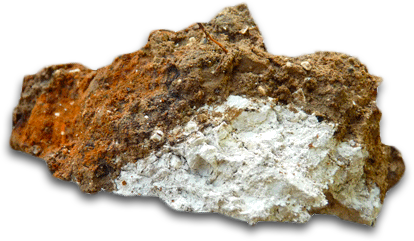MENU

RESPECT FOR
THE EARTH
Aware of the environmental footprint we leave, when producing a premium Champagne, we have chosen to make use of environmentally sustainable farming practices. We feel that there are three main areas of importance, namely: the terroir, the surrounding vegetation / plant life and the varying climatic conditions.

· Use of organic composts
· Minimal tillage of the soil
· Maintenance of natural groundcover
· Careful pruning, and pruning method adapted to each Vine
· Constant and meticulous observation on our vines
· Meticulous thinning of the plants and canopy management
THE TERROIRS
LUDES 1ER CRU
Located east of the Montagne de Reims, this is Where you will find the majority of our Vineyards. It is comprised of predominantly calcareous clay soil of the secondary period (cretaceous). Traces of cuisien soil is located closer to the foot of the hill. The wines produced from this village possess elegance and finesse, and have proven to age well.
VILLEDOMMANGE 1ER CRU
Located west of the Montagne de Reims, Villedommange is rich in soils of the tertiary period. This soil is comprised of graveluches (a mix of limestone and clay) and sand. At the top of the hill, the soils are more clayey; chalk is still present, but at a greater depth. This specific terroir provides us with consistently well-balanced
grapes that yield charming wines with roundness and aromas of yellow-fleshed fruits. We find these grapes ideal for NV crus.
BROUILLET ET SERZY ET PRIN
Located in the Ardre Valley these three terroirs are situated closely together. As the valley possesses a slightly cooler climate than the aforementioned Vineyards and therefore ripen later, we are able to harvest Ludes and Villedommange at optimal maturity and these vineyards after. Like Villedommange, this soil is also of the tertiary period, and likewise made up of clay and sand with chalk beneath. The wines produced from this valley reflect a unique freshness, and carry the distinct aromas of peach, pear and citrus.
VAVRAY LE GRAND
Our most southern vineyard (in the Vitriat) is also the youngest, established in the 1990's. Set on a hard chalk vein from the secondary period, the weak soils of this vineyard are ideal for growing chardonnay.
Wines from Vavray are characterised by marked minerality, and are fresh and well-balanced with robust full aromas.
THE VINIFICATION
We liken our winemaking to that of a river. It starts upstream in the vineyards and flows downstream into the cellar.Our winemaking is a continuous flow of processes and procedures. Another important factor that we take into consideration of is the preservation of the various 'grape personalities'.
Over time, we find them to be rich, balanced and fruity. By means of environmentally sustainable farming practices, the grapes are given the opportunity to express their various personalities and reach their full dynamism within a relatively short period of time.
It is these personalities that are nurtured by our team, to produce a high quality Champagne, clearly evident in the colour, on the nose and on the pallet.
"For Us each year is a new year".
"WE ARE PRECISE,
RIGOROUS AND RESPECTFUL
OF OUR TERROIRS"
Quantities may vary from year to year, which is dependant on a number of factors. For us, being able to adapt according to the vintage is vital and picking depends on the maturity of the grapes from the various villages and blocks. Our desire to produce champagnes with character drives us to vinify each village, each varietal and each parcel (where the size of the parcels allow it) separately. Making distinctive wines from a wide variety of terroirs is, in our opinion, fundamental to guaranteeing the regularity, finesse and precision of our blends.
The regularity and continuity of our blends can also be attributed to our reserve Wines. Since we began to make wine, we’ve continuously maintained our stock of these reserve wines, which are the « memory of the winery ». These reserves, stored in oak vats and in tanks, are blended with the wines from each harvest using the solera process. We use this process primarily for our reserve blend “L’Invitation”. The aging of our champagnes on the lees (or yeast sediment) in our cellars allows them to mature before they’re sold.
Both the number of years for which the bottles are aged on the lees and the conditions in which they’re kept influence the quality of our wines. We do our best to adapt the aging of each blend according to its potential, ensuring that your champagne will always be ready to drink when you buy it. As such, the Brut Réserve “Invitation” will age for on average three years, while the Sélection “Instantanée” will stay in the cellars for six.
Continue the visit :
